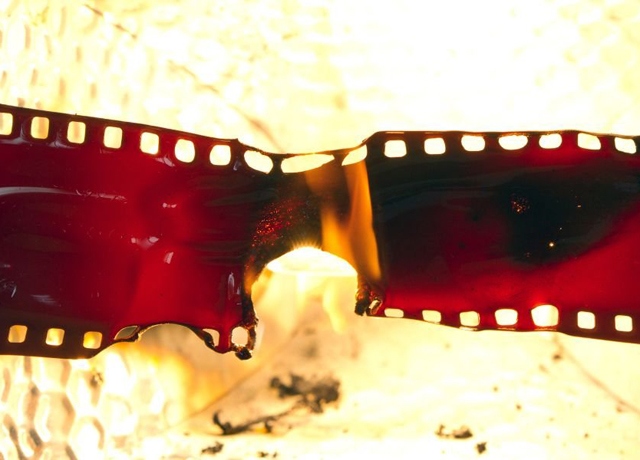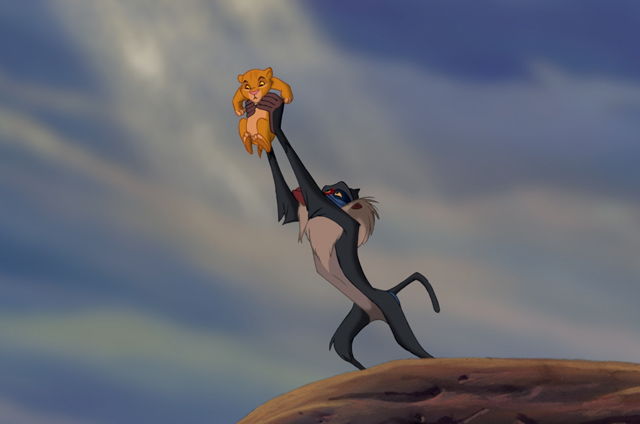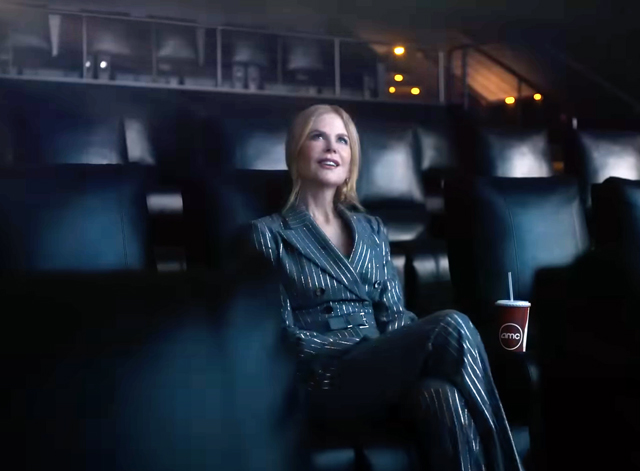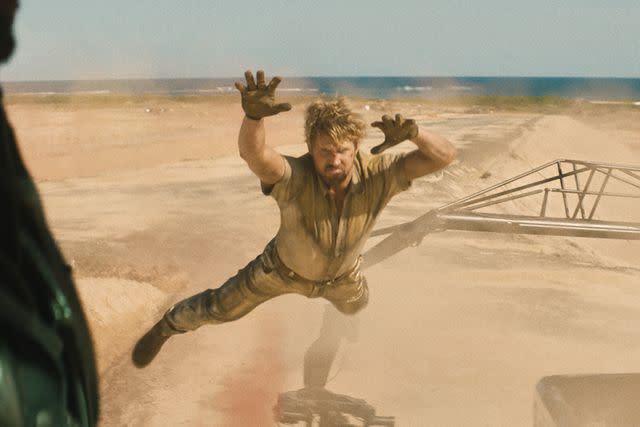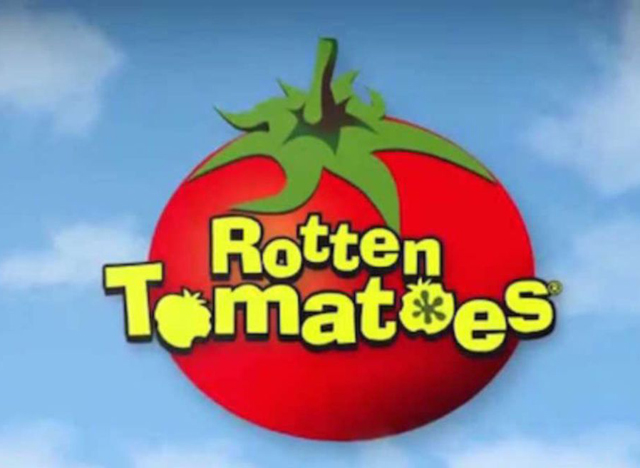
It’s a strange time for the movie studios that defined the identity of Hollywood. We know them as the Big 5; Warner Brothers Discovery, NBC Universal, Sony, Disney, and of course Paramount. For the longest time, it was known as the Big 6, but the studio previously known as 20th Century Fox ceased to be independent after a merger with the Walt Disney Company that finalized in 2019. It’s fate was one of the most revealing signs of an industry that was in flux and about to change forever. The rise of streaming caused a disruption in the normal business model that Hollywood had been running over the last half century. With the studios wanting to get in on the lucrative new distribution model, they went through a busy period of content consolidation, cementing stronger holds on the properties that they had acquired over the years. This also led to several mega mergers like the Disney and Fox one, where combined catalogs of movies and shows would help boost the content library for these new streamers. However, this streaming arms race led to several financial problems down the road. Hard cuts have had to be made to these newly expanded studios like Disney/Fox and Warner Brothers Discovery, but no studio had a more dire outlook in these latter days of the streaming wars than Paramount Pictures. Paramount, the last remaining studio actually located in Hollywood itself, was facing some economic shortfalls this year that forced it’s parent company, National Amusements, to pursue a sale. The industry was watching this development closely, because depending on who ended up owning Paramount in the end could either signal a new era for the century old studio, or be a sign of the end of yet another storied brand within Hollywood. History is important to the identity of Hollywood, but this is also a business that sometimes can steamroll over the past in the name of progress.
Throughout Paramount’s history, it has seen the studio pass through many different hands, but all the while it has still remained one of Hollywood’s most legendary studios. Founded in 1914 by Adolph Zukor, it is the second oldest studio in Hollywood still running today after Universal Pictures. Funny enough, Paramount started it’s history off with a merger between Zukor’s Famous Players Film Company and producer Jesse L. Lasky’s Feature Play Company. They began to make silent pictures out of a small barn on what is now Sunset and Vine in Hollywood, giving their directorial duties to an inexperienced stage manager at the time named Cecil B. DeMille. The barn still survives today, though it has been moved to Highland Avenue across from the Hollywood Bowl and is now the Hollywood Heritage Museum. In the 20’s, they used the profits from their movies to establish a larger facility located on Melrose Boulevard and that’s been their home ever since. In 1927, Paramount adopted it’s now iconic logo of a mountain top ringed by an arch of 22 stars. The meaning behind the stars has been lost to time, but the logo has remained fairly unchanged in almost 100 years; merely upgraded graphically with the advancements in filmmaking over time. At Paramount, the key to their success were it’s stars, and they were the home to all the silent greats like Mary Pickford, Douglas Fairbanks, and Rudolph Valentino to name a few. In the meantime, Paramount was also growing itself into one of the titans of exhibition as well, being the owners of numerous movie theaters across the country. Unfortunately for them, their rapid growth in the exhibition side of the business would back and bite them, and the result would change Hollywood forever.
Paramount created a practice called “block booking” which made it so that any theater that wanted to screen a film starring one particular star would also have to buy a year’s worth of other Paramount movies. Paramount wasn’t alone in this practice in Hollywood, but they were the most prolific studio owned theatrical distributor too, which gave them close to a monopoly in the business. This practice of “block booking” made it impossible for independent theater owners to rise up in the business because it limited the amount of movies that would have been available to screen. So, anti-trust lawsuits were filed, which were argued all the way up to the Supreme Court. This led to the landmark United States v. Paramount Pictures decision of 1950, which effectively broke up the movie studios ownership of movie theaters and brought an end to the movie studio system as we knew it up to that point. All of the studios in Hollywood were effected, but none more so than Paramount. It lost a significant share of it’s yearly income after being forced to sell off it’s theatrical division, and it spent much of the 1950’s and 60’s struggling to regain it’s past glory. Meanwhile, a corporate manufacturing conglomerate named Gulf+Western was beginning to pivot into the entertainment business. They acquired two major Hollywood players in 1966, one was the television studio Desilu Pictures and the other was of course Paramount. The combination of the two would prove fortuitous because Desilu happened to be the rights holders of a popular shows like Star Trek and Mission: Impossible, two brands that would over time become some of the most valuable franchises under the Paramount umbrella. Under Gulf+Western, Paramount would see a revival in the 1970’s, especially under the supervision of their new head of production, a young executive named Robert Evans, who would be a hit making machine, greenlighting beloved classics like Rosemary’s Baby (1968), Love Story (1970), Chinatown (1974) and The Godfather Parts I and II (1972, 1974) during his tenure.
The success continued through the 80’s and 90’s, and Paramount would also become the starting off point for some of the biggest power players in the industry. Both Michael Eisner and Jeffrey Katzenberg would capitalize on the success of their launch of the Indiana Jones franchise at Paramount by jumping over to the leadership at Disney. Paramount also became the original home of the mega successful producer team of Don Simpson and Jerry Bruckheimer, and they would deliver a huge hit for Paramount with the Tom Cruise led Top Gun (1986). Cruise himself would also set up shop as a producer within Paramount, working almost exclusively with the studio for most of his career. But, a pivotal moment came in 1993 when billionaire Sumner Redstone’s media conglomerate Viacom decided to add Paramount to it’s portfolio. In a deal worth $9 billion at the time, Redstone’s National Amusements, the parent company of Viacom, became the primary shareholder of Paramount Pictures and all of it’s properties. A few short years later, Viacom would also acquire the television network CBS, which now put all three Big 3 TV networks now under the control of movie studios (NBC and ABC were already owned by Universal and Disney respectively). With the combination of it’s movie library, it’s valuable franchises from the old Desilu studio, and now a whole TV network under one roof, Viacom built Paramount into one of the most powerful studios in Hollywood. Viacom would continue to expand into the cable television market, acquiring channels like Comedy Central, MTV, BET, and Nickelodeon. As time went on, Viacom was looking to take it’s vast library of movies and shows and use it to make a foothold in the new streaming market. Initially, they tried to make their launch under the CBS name, calling their platform CBS All Access. It became clear that this wasn’t a strong enough brand to make a difference in the face of competition with HBO Max and Disney+. So, Viacom decided to undergo a whole rebrand with the Paramount name being their flagship. CBS All Access would become Paramount+ and Viacom would be renamed Paramount Global.
With over a hundred years of experience in Hollywood, you would imagine that the Paramount name would help bring fortune to this new era of streaming. But even though they had some modest success, mainly helped by showrunner Taylor Sheridan and his hugely popular drama Yellowstone, Paramount+ has fallen well short of expectations. Like much of the other studios in Hollywood who jumped on board the streaming craze, Paramount is learning the hard lesson that streaming wasn’t going to be the bottomless well of fortune that they all thought it would be. For Paramount, their lack of growth in streaming combined with the enormous amount of debt they acquired in order to grow and acquire assets over the years, suddenly put them in a bind they haven’t experienced in a long while. This all came to a head this year, as Shari Redstone, the CEO of National Amusements after the death of her father Sumner in 2020, was looking to offload the company and it’s assets. This led to a lot of worries within the industry as to what would happen to the legendary studio. Would it be swallowed up by another studio like Fox had under Disney. Or would it be bought by a Wall Street backed corporate raider who would break it up and sell off the scraps of what the studio once was, effectively killing it completely. It all depended on who would meet Shari’s asking price. The bidding war itself became a bit of a fiasco, as what looked like done deals quickly fell apart as agreements would change seemingly every day. All the while, Paramount Global’s stock value sank to it’s lowest mark ever, being traded at only a fraction of what it’s competitors Warner Brothers and Disney were trading at. Thankfully, powerful indie producer Skydance Media, which has had a long history working in collaboration with Paramount, including being a part of the most recent Star Trek and Mission: Impossible films, offered a merger deal with Paramount Global valued at $8 billion. Skydance CEO David Ellison would effectively become the head of Paramount under this new agreement and National Amusements would no longer have the controlling interest in the studio moving forward, ending their 30 year control over the studio. For Shari Redstone, and most of the industry, this is the most ideal outcome as it keeps the studio as we know it intact, securing Sumner Redstone’s legacy as the head of the company, and prevents it’s assets from being sold off separately.
While it looks like Paramount is getting a happyish ending out of this, their struggle is still very much a clear example of how fragile legacies can be in Hollywood. For a lot of Hollywood’s history, we’ve seen many film companies come and go, and when one ceases to exist, their library of titles suddenly hang in limbo. If this were to happen to one of the remaining Big 5 studios, it would have a profound ripple effect across the industry. With Paramount spending a few months of uncertainty during the bidding war, it made a lot of people worried that we were in fact seeing the last days of this storied studio. At one point, Sony expressed interest in acquiring Paramount, which would reduce the number of big studios down to just 4. Another merger on the level of what we saw with Disney and Fox would have been devastating for Hollywood as it would have put a whole lot of people out of work due to redundancies. And then there was the possibility of the studio being dismantled in a fire sale of sorts, splitting all the different properties of Paramount apart and selling them to interested parties all across the business, making the former Paramount brand itself worthless. This is something not uncommon in Hollywood. Other once powerful studios like RKO were dismantled over the years and sold off in pieces to other studios. These kinds of things happen in Hollywood usually due to movie productions that go way over budget, to the point where no amount of box office success will save them. United Artists, the studio formed by the combined forces of former Paramount contracted stars Mary Pickford, Douglas Fairbanks and Charlie Chaplain, was once a powerful force in Hollywood and even made huge profits off of their American distribution of the James Bond franchise. Then came the disaster that was Michael Cimino’s Heaven’s Gate (1980), a box office bomb so costly that it put United Artists into bankruptcy. They were eventually acquired by MGM, which itself fell into hard times and today is now owned by Amazon. Smaller companies fare even worse as they lose control over their libraries of films, and those that can’t find a home in another studio end up getting lost in vaults over time and forgotten to the world.
So what does the Skydance and Paramount merger mean. It’s still uncertain, as the deal won’t close until 2025. But what likely will happen, as is the case with most mergers, is that there will be layoffs in both companies. Paramount may need to offload some of it’s assets in order to meet Skydance’s offer price. In the entirety of the Viacom era, Paramount saw massive expansion that saw their assets grow to a point where it may be too big to manage. In all likelihood, where Paramount may make their cuts is in the struggling cable division, as streaming has become a bigger concern of theirs. There are already interested parties who want the BET Network, so that is likely going to be one of the channels that will leave the Paramount portfolio. Speaking of streaming, there is talk of Paramount+ either being completely overhauled, sun-setted, or merged with another streamer, as it currently is one of the key contributors leading to Paramount’s dire financial situation. There’s talk of Paramount+ combining with Warner Brother’s MAX in what would likely be one of the biggest mergers yet to come in the streaming market, which itself will affect the industry as a whole. But whatever move it makes, the goal is to preserve Paramount’s history as best it can be saved. That was what Shari Redstone was so adamant about. Her father built the company up over 30 years and she didn’t want that legacy to disappear. Unfortunately, the nature of the business is not kind to legacy. Shareholders were likely not happy with the prolonged and ever-changing process it took to reach a deal. Some shareholders likely would’ve been happier if Shari Redstone had just started selling off the assets of the studio for short term profits. Hollywood is first and foremost a business, and what it takes to make a studio like Paramount run is the confidence in investors that the company can continue to make money. Too much effort put into preserving the past can make investors warry because they are more concerned about the future, and that’s what makes it so hard for studios to maintain their stature over time. There’s no room for sentimental attachments in Hollywood.
One good thing about the Skydance/ Paramount merger is that it will give Paramount the chance to maintain it’s identity into the future. And one of the biggest things that will remain as part of the company is the legendary studio lot itself. Remaining in it’s same footprint over nearly 100 years, and the only studio to stay in Hollywood after all the others moved to the San Fernando Valley or Culver City, the Paramount Studio lot is a living monument to the history of cinema. Walking under those iconic white arches you know that you are walking in the footsteps of giants, seeing soundstages where classics like Sunset Boulevard (1950), The Ten Commandments (1956), The Godfather, Raiders of the Lost Ark (1981), Forrest Gump (1994), and many more were filmed. Even today it’s a bustling, alive studio lot, with recent hits like Sonic the Hedgehog (2020) and Top Gun: Maverick (2022) keeping Paramount well positioned amongst the Big 5 studios. Hopefully under new management with Skydance we’ll see a renewed energy at the studio that will help it survive for many more years as it currently is. It’s just unfortunate that so much drama had to occur during the process of the company changing hands. Paramount, for it’s whole history has had to overcome a lot of hurdles. After being crippled by the dissolution of the studio system with the Paramount Decision by the Supreme Court, they managed to bounce back thanks to their pursuit of making quality entertainment. They helped to revitalize old properties like Star Trek, Mission: Impossible and Transformers and turn them into billion dollar franchises. They helped to take CBS from last place in network ratings to first place with well targeted programming like CSI and NCIS for the older crowd and The Big Bang Theory for the younger crowd. Time will tell how Paramount+ will fare, but hopefully it doesn’t sink the future of this long time studio. Both literally and figuratively, Paramount is Hollywood. It’s a living reminder of what the industry has stood for, and hopefully the sun doesn’t set on the other side of it’s lofty mountaintop.
